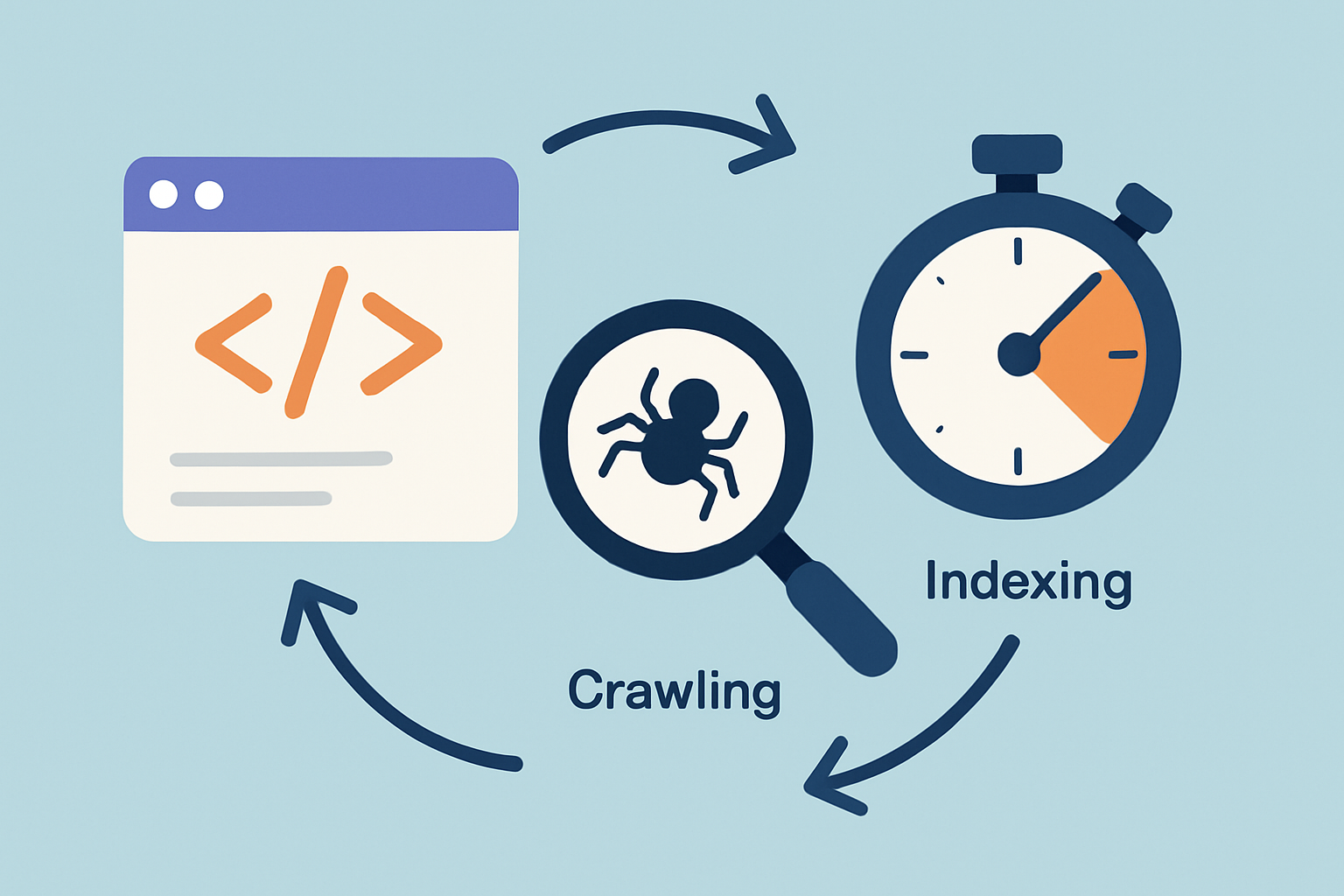

Single Page Applications (SPAs) have shaken up web development by delivering silky smooth, app-like experiences we’ve all come to appreciate. Getting SPAs to play nice with search engine optimization isn’t always a walk in the park, mainly because they lean so much on client-side rendering.
Single Page Applications load just one HTML page and then update the content on the fly as users interact, sidestepping the need for full page reloads. They rely heavily on JavaScript frameworks like React, Angular or Vue to fetch data asynchronously and render views on the client side.
Getting your Single Page Application to play nice with search engines is not always a walk in the park, but understanding these core SEO principles can make a world of difference.
SEO for SPAs really comes down to making sure search engines can crawl and rank content that’s mostly rendered on the client side. It’s a balancing act—adjusting the old-school SEO playbook to fit dynamic content loading, handling URLs correctly and using metadata smartly.
While SPAs bring solid UX perks to the table, they often cause SEO headaches. These include reliably rendering JavaScript content, delays in getting updated info indexed, juggling unique URLs for deep linking, and dynamically managing meta tags that help search engines make sense of the page context.

Visual breakdown of key SEO challenges faced by Single Page Applications
When tackling SPA SEO challenges developers typically lean on strategies like server-side rendering (SSR) and pre-rendering static snapshots. They also use dynamic rendering for bots and meticulous metadata management. These approaches make content more accessible and easier for search engines to crawl while keeping URLs clean and shareable.
Use server-side rendering (SSR) to deliver fully rendered pages straight to search engines and give your crawling and indexing a real leg up.
Think about using pre-rendering tools that whip up static HTML snapshots for crawlers so bots get what they need without the user noticing.
Implement dynamic rendering so your JavaScript-heavy pages shine for users while bots get a simpler quicker version to chew on.
Update metadata like titles and descriptions on the fly to keep them in sync with what is happening on the page.
Keep URLs neat and easy to crawl by leveraging the History API which also makes paths user-friendly and bookmarkable—a win-win.
Keep chipping away at site speed improvements by slimming down your JavaScript and playing the caching game smartly.
Server-side rendering (SSR) means the server constructs the full HTML of a page before it reaches your browser. This ensures users and search engines get a fully formed page straight away. It usually boosts initial load times and makes SEO-friendly crawling easier. If you’ve used frameworks like Next.js, Nuxt.js or Angular Universal, you know they make adding SSR to single-page applications almost effortless. SSR solves the problem search bots face when rendering JavaScript and delivers meaningful, crawlable content right away.
Pre-rendering takes a snapshot of SPA pages ahead of time and turns them into static HTML that bots find easier to crawl. Dynamic rendering plays a clever trick by figuring out when a crawler is poking around and serving a simpler, server-rendered version. Regular users continue enjoying the full SPA experience without a hiccup. These approaches come in handy especially when rolling out full SSR feels like throwing a fancy dinner party you are not ready for because it is too costly or complicated.
When it comes to technical SEO for SPAs, nailing down effective URL management using the History API is absolutely key to avoiding the pitfalls of hash-based routing because it can really disrupt your SEO efforts. Building out XML sitemaps is a smart move to help search engines find every nook and cranny — or more precisely, every view within your SPA. Adding canonical tags helps keep duplicate content issues under control. Also, do not forget structured data in JSON-LD format since it gives your listings extra sparkle in the search results with those eye-catching rich snippets. Mobile optimization remains non-negotiable because most people browse on their phones these days.
| URL Handling Method | SEO Impact | Pros | Cons |
|---|---|---|---|
| pushState (History API) | This one generally gets the nod from search engines since clean URLs really do help with indexing and make sharing a breeze. | ||
| Supports full semantic link structures, which is a big plus. | |||
| Also, it lets you keep your analytics sharp and spot-on. | Produces clean, easy-to-read URLs that ditch the annoying # symbol. | ||
| Boosts crawlability and overall user experience, making life easier for both users and bots. | |||
| Plays nicely with most SEO tools out there. | Requires a bit of server setup magic to handle route fallbacks properly. | ||
| Can add a sprinkle of complexity to deployment, so a little patience is needed. | |||
| hash routing (#) | Usually less friendly for SEO since search engines tend to lump these URLs together as a single page. | ||
| Fragment identifiers often slip under the radar when it comes to crawling. | |||
| Can make bookmarking or sharing specific content states a bit of a headache. | Easy to implement and you won’t need to mess with server-side settings at all. | ||
| Keeps the old-school browsers happy and compatible. | Fragment URLs don’t really tell search engines they’re unique pages. | ||
| This can drag down your indexing and ranking. | |||
| URLs can end up being less intuitive for sharing and tracking purposes. | |||
Recommended best practice: Go with pushState combined with solid server fallbacks on your SPA routes for the smoothest SEO sailing.
Tracking how well single-page applications perform in SEO usually means leaning on specialized tools like Google Search Console. It’s your go-to for keeping tabs on index coverage and catching crawl errors before they turn into headaches. You can also submit sitemaps without breaking a sweat. Nobody likes a slow clunky site so Lighthouse lets you run performance audits to get a real feel for site speed and accessibility. Meanwhile, crawling and rendering tests give you the lowdown on how bots handle all that JavaScript magic.
Top brands like Airbnb, Netflix and LinkedIn really lean on SPAs combined with savvy SEO tactics. Airbnb cleverly mixes server-side rendering with smart metadata tricks to get their pages indexed quickly. Netflix takes a different route and uses pre-rendering to serve static content to search engines. This move helps boost their visibility even though much of their heavy lifting happens on the client side. Then there’s LinkedIn which keeps things straightforward with dynamic rendering and clean URLs. This makes their site easy to crawl while still delivering a dynamic experience.
"Adding server-side rendering truly shook up how Google picked up our SPA content. We saw a solid boost not just in organic traffic but also in how users actually stuck around and engaged. It’s been a game-changer." – Senior Frontend Developer, Leading SPA Platform
Advances in JavaScript SEO and smoother rendering by Googlebot help make optimizing single-page applications more manageable. The relationship between single page application and SEO continues to improve as evolving frameworks embrace server-side rendering, and the rise of AI-powered tools also contributes to this.
Struggling to rank higher on search engines? Moz's powerful SEO tools and analytics can unlock your website's full potential. As a leading internet marketing software provider, Moz empowers businesses to optimize their content, build better links, and drive more organic traffic.
Struggling to stand out in the crowded online landscape? Moz's industry-leading tools and analytics are designed to empower your Internet Marketing strategies. Gain actionable insights, optimize your SEO, and unleash the full potential of your digital presence.
8 pages contributed
With a background in journalism and content creation, Carlos Rodriguez brings a unique storytelling perspective to SEO, crafting compelling narratives that resonate with audiences and search engines alike.
Read Articles